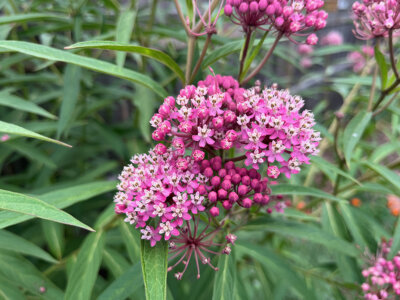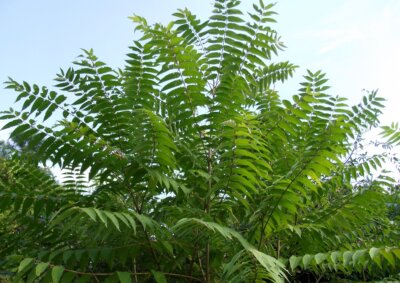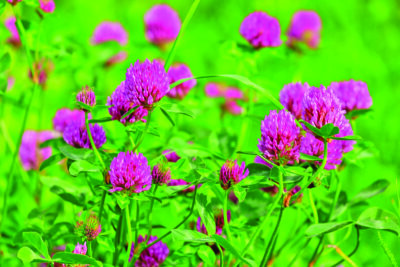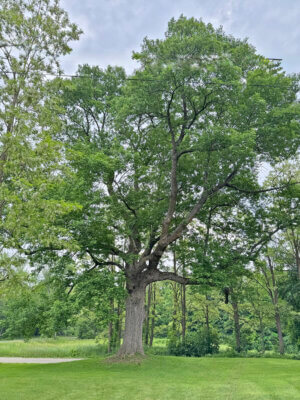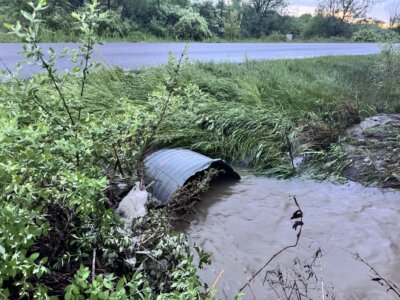Spring in the air
Even on a frigid day with raging winds, the sun penetrates and warms. Spring! The Vernal Equinox is in the rearview mirror, birdsong fills the air, and crocuses and snowdrops bloom. What else is going on?
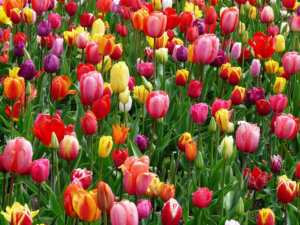 Early Signs of Spring
Early Signs of Spring
The first flowers to appear in the woods, usually in early April, are serviceberry, a shrubby tree with smooth gray bark. This early bloomer sports three evocative names: serviceberry, juneberry, and shadbush. In colonial times, flowering coincided with the ground being warm enough to dig graves and bury the dead and thus hold services; the small tree produces its fruit early in the season, hence Juneberries; and its spring blossoms coincide with shad running upstream. Even before the delicate flowers appear, the leaves may unfurl in response to warm, sunny days.
Ticks
It is not too soon to be mindful of ticks. Adults that overwintered are hungry for a blood meal in order to lay eggs. Some adult ticks have been gorging on deer or moose blood all winter. When they drop off, they lay their eggs promptly. In addition to posing a danger to humans, ticks threaten our moose population. A 1,000-pound moose may host up to 75,000 blood-sucking parasites, leading to weakness or death. Consider wearing clothing that protects against ticks. Many retailers sell insect-resistant pants, shirts, hats and more that protect for up to 70 washes. If you plan to spend much time outdoors in the coming months, these would be a good investment.
Courtship
Our noses may alert us to one spring awakening in the animal kingdom, the skunk. Mammals are emerging from dens and tunnels to seek mates. With love in the air, it is common for skunks and possums to be hit by cars as they pursue a partner.
Cold-blooded animals, including amphibians, are warming up, too.
Wood frogs are among several local frogs that contain high levels of glucose in their blood and can freeze in winter. Blood stops flowing and respiration, heart beat and muscle movement cease. As much as 65% of the water in a wood frog’s body becomes ice until a spring thaw. Then courtship begins.
At our vernal pool, an audio recorder is poised to capture the love songs of wood frogs in the coming days and evenings. We’ll soon return to count egg masses and then look for tadpoles to emerge. If the pool does not dry out too early, as it did last season, the tadpoles will metamorphose into the next generation of frogs.
Peepers will also soon be a-courtin’, which means we will hear their songs at night. My nature journal notes the average date for the first peepers in our neighborhood is the end of March. That’s usually when killdeer return to nearby pastures, squawking and feigning a broken wing to distract from the location of its nest. Kildeer, a noisy, long-legged member of the plover family, build nests on the ground, a cup of twigs and pebbles to hold well-camouflaged eggs.
Veggie Gardens
If you are dreaming of fresh-picked strawberries, corn or tomatoes, now is the time to make garden plans. I’m taking Vermont’s Master Gardener Course this winter—wow, there’s a lot I don’t know! The first step is to start with a notebook-—easy so far. This is where you will record where you planted your garlic last fall so you don’t have to wait for it to emerge to avoid planting your peas on top of it. Draw a map of crop placement. If you have maps from previous years, make a best effort to rotate crops. This decreases the chance that pests or diseases will be waiting in the soil for the return of a favorite victim.
In a garden notebook, remember problems from previous seasons so you don’t repeat them—tomatoes so close together it’s impossible to find ripe fruit, weeds strangling crops, or Colorado potato beetles. Read up on best practices and try again. In April, hope triumphs.
Spring Hikes
After a year of pandemic captivity, you might be ready to explore the hills and mountains. The Green Mountain Club offers tips to keep you safe on spring hikes. With big temperature fluctuations, layers are more important than ever: a wicking layer next to the skin, one or more insulating layers, and a wind-breaking jacket or shell. Wool is a good insulator, wet or dry. Avoid cotton that can remain damp for hours. Neck gaiter or buff can serve as a balaclava, neck warmer or hat in a pinch. Hat and gloves or mittens of different warmths. Traction devices—grippers, snowshoes. The surface may alternate between mud, snow and ice even on a short hike. Don’t forget food and drink. It’s better to bring home extra than to be hungry on the hoof. Headlamp? Always. Emergency blanket. First aid kit with matches, a candle and a whistle. Hand and toe warmers are compact and don’t weigh much. Make sure to check the weather before you head out.
Need a change from Mt. Philo, Charlotte Park and Wildlife Refuge and Shelburne Farms? Consider Mount Independence in Orwell, Snake Mountain in Addison, the 18-mile, multi-segment Trail Around Middlebury, and the VYCC Trails, in Richmond, three miles of low-elevation, south-facing trails.
Bike Ferry
Mark your calendar: The Bike Ferry opens Friday, May 28, carrying pedestrians and bikers across the 200-foot ‘cut’ between South Hero and the Colchester Causeway. The ferry will run on long weekends until June 14 when daily service begins. For complete information on the Island Line Trail, ferry and related topics, check the Local Motion website.
Happy spring!
Related Stories
Popular Stories
If you enjoy The Charlotte News, please consider making a donation. Your gift will help us produce more stories like this. The majority of our budget comes from charitable contributions. Your gift helps sustain The Charlotte News, keeping it a free service for everyone in town. Thank you.
Andrew Zehner, Board Chair



